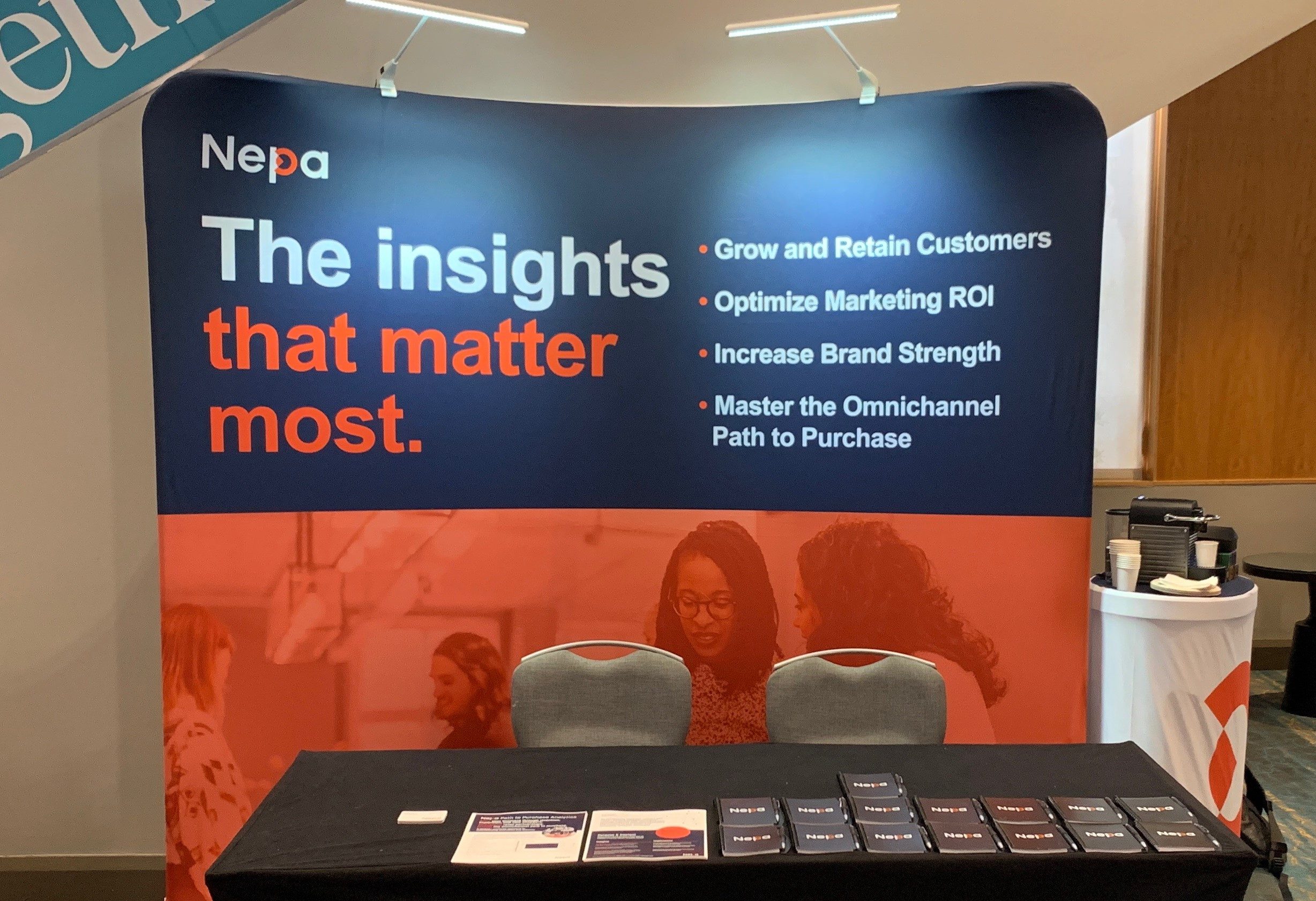The 2019 Path to Purchase Summit hosted leaders from Consumer Goods and Retail in Fort Lauderdale around the theme of “Unraveling the Complexity of Today’s Commerce Through Collaboration”
Nepa was featured in the Solutions Gallery – demonstrating the role of shopper-centric Path to Purchase Analytics in unraveling the complexity of fragmented, omnichannel shopper journeys. Our recent eBook goes deep on how Path to Purchase analytics is helping brands to win shoppers and grow categories.
The agenda featured powerful content and allowed for great discussions among industry leaders – here are the top 7 trends we observed:
1. Traditional retailer / brand power dynamic
The traditional retailer / brand power dynamic is being tested in new ways and with new tools and tactics. For example, retailers are expecting deeper and deeper investment from brands in their own programs and platforms, while CPGs are increasingly collaborating across company lines to create brand-driven events and campaigns with critical mass designed to achieve strong retailer support.
2. Measurement challenge
There is a growing measurement challenge – Non-linear shopper journeys, walled gardens, and a multitude of online and offline touchpoints are leaving shopper marketers with basic questions like “are my pre-shop touchpoints even measurable?” as well as more strategic questions around driving growth. Retailers and brand owners often resort to less sophisticated measurement approaches, undermining learning and trust across stakeholders.
3. Focus on Conversion
Focus on Conversion across the journey – Shopper satisfaction metrics (unconnected to sales) was mentioned in several talks, but there is increasing focus on converting shoppers on the path to purchase. While accepting his place in the Shopper Marketing Hall of Fame Peter McGuiness, CMO at Chobani, spoke of his emphasis on shopper marketing because “in-store and digital shopper activations are inextricably linked with volume.” And another speaker mentioned, “shoppers can convert from any place along the path to purchase.”
4. Amazon was in the room
Amazon was in the room even when it wasn’t mentioned by name. Speakers from multiple retailers emphasized their (often Amazon-inspired) initiatives as exciting new programs, but many are playing catch up. For example, retailers largely focused on non-traditional revenue streams, improving the customer experience in physical stores, and efficiency / cost reduction initiatives.
5. Omnichannel shopping
Omnichannel shopping is being given air time – ‘Online’ and ‘Offline’ are connected liked ‘PB&J’ – you won’t hear one without the other in a presentation – yet there is still a limited understanding of how one influences the other on shoppers’ path to purchase. For example, there’s a big appetite to understand digitally-influenced sales that occur in brick-and-mortar stores. And, vice-versa.
6. Smart Labeling and Circular supply chain
Consumers demand for sustainability and personalized diets are driving a need for transparency and corporate social responsibility. Smart Labeling is providing supply chain and ingredient information to shoppers. TerraCycle is launching a new company, Loop, to create a circular supply chain, to transform waste management behaviors and economics.
7. Influencer marketing
The role of influencer marketing and reviews are attracting more investment along the path to purchase, because as Joel Warady from Enjoy Life Foods puts it, “people trust strangers more than brands” – yet, it’s another investment where attribution is extremely difficult to prove without shopper-centric P2P analytics.
Thanks to the P2P Institute for organizing a great event and to made it great by sharing their experiences and challenges from stage or in conversations in the Solutions Gallery.

